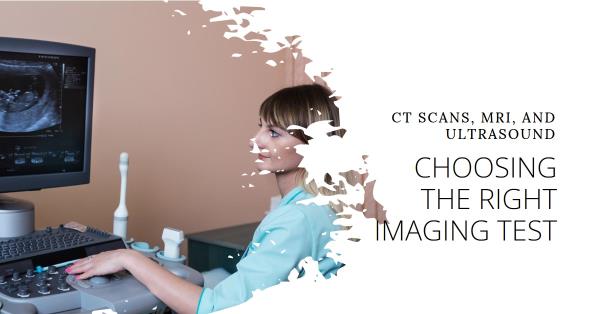
How CT Scans Compare to MRI & Ultrasound for Specific Conditions
Medical imaging is crucial in diagnosing a wide range of medical conditions, from detecting early-stage cancers to assessing organ damage after trauma. The three most commonly used imaging techniques—CT (Computed Tomography) scans, MRI (Magnetic Resonance Imaging), and ultrasound—all play vital roles, but their applications and strengths vary significantly. In this article, we’ll explore how these techniques compare for specific medical conditions and help you understand when a CT scan might be the most appropriate choice.
CT Scans: A Comprehensive Diagnostic Tool
A CT scan uses X-rays and computer technology to create detailed cross-sectional images of the body. It’s particularly effective in diagnosing conditions involving bones, chest, and abdominal organs. Because CT scans provide higher-resolution images than X-rays, they are often used to pinpoint the exact location and extent of an issue. Here are some specific medical conditions where CT scans are often preferred:
- Trauma and Injuries
In cases of severe trauma, such as car accidents, CT scans are often the go-to imaging technique. CT scans offer quick, detailed images of bone fractures, internal bleeding, and organ damage, helping emergency doctors make fast, life-saving decisions. Studies show that CT imaging identifies life-threatening injuries in trauma patients 94% of the time, compared to 78% with MRI and ultrasound . - Cancer Detection and Monitoring
CT scans are frequently used to detect tumors, particularly in the lungs, liver, and pancreas. Their ability to provide highly detailed images helps physicians not only locate tumors but also monitor their growth or shrinkage over time. For certain types of cancer, CT scans can reveal more detailed information compared to MRI or ultrasound, making them critical for treatment planning. - Lung Diseases
CT scans are exceptionally effective for diagnosing lung conditions, such as pneumonia, pulmonary embolism, or chronic obstructive pulmonary disease (COPD). The high resolution of CT imaging allows for detailed views of lung structures, making it a superior choice in cases where fast, clear results are needed. - Abdominal and Pelvic Pain
When patients experience unexplained abdominal pain, CT scans are commonly used to investigate causes such as kidney stones, appendicitis, or liver disease. A study found that CT scans helped correctly diagnose the cause of abdominal pain in 92% of cases, compared to 75% with ultrasound . - Cardiovascular Conditions
For heart and vascular conditions, CT scans can be used to identify problems like aortic aneurysms or coronary artery blockages. CT angiography, a specific type of CT scan, offers high-resolution images of blood vessels, making it invaluable in assessing cardiovascular risk.
MRI: Precision Imaging with No Radiation
Magnetic Resonance Imaging (MRI) uses powerful magnets and radio waves to create detailed images of soft tissues, making it an ideal choice for conditions affecting the brain, spinal cord, muscles, and joints. MRIs don’t use ionizing radiation, which makes them a safer option for certain patients, such as those requiring multiple scans over time.
- Neurological Disorders
For conditions affecting the brain and spinal cord, such as multiple sclerosis, stroke, or brain tumors, MRI is often the preferred imaging method. Its ability to capture highly detailed images of soft tissues, including nerves and the brain, makes it invaluable in diagnosing and monitoring neurological conditions. MRI is estimated to be 92% effective in diagnosing brain tumors, compared to 78% for CT . - Musculoskeletal Issues
MRI is widely used to diagnose injuries involving muscles, ligaments, and cartilage. For example, it’s the standard imaging technique for identifying ACL (anterior cruciate ligament) tears in the knee. MRI provides detailed images of soft tissues without the use of radiation, making it the gold standard for evaluating sports injuries. - Spinal Cord Conditions
In cases of herniated discs or spinal cord compression, MRI excels in providing detailed views of the spinal structures, helping doctors plan surgical or non-surgical treatments.
Ultrasound: Safe and Effective for Soft Tissue Imaging
Ultrasound uses sound waves to create images and is commonly associated with prenatal imaging, but it also plays a key role in diagnosing conditions in the abdomen, pelvis, and heart.
- Pregnancy and Fetal Health
Ultrasound is the go-to imaging technique for monitoring pregnancy. It is completely safe, uses no radiation, and provides real-time images of the fetus. Doctors can use ultrasound to check the baby’s development, detect potential complications, and monitor fetal heartbeat. - Gallstones and Kidney Stones
Ultrasound is often the first imaging technique used to detect gallstones or kidney stones. Though CT scans may provide more detail, ultrasound is favored in certain situations due to its lack of radiation exposure. - Cardiology
In cardiology, echocardiograms (a type of ultrasound) are essential in assessing heart function. Ultrasound technology can capture detailed images of heart valves and blood flow, making it useful for diagnosing conditions such as heart murmurs or heart failure.
Comparing CT, MRI, and Ultrasound: What’s Best for Specific Conditions?
The choice between CT scans, MRI, and ultrasound largely depends on the medical condition in question. CT scans are superior for detailed images of bones, chest, and abdominal organs, especially in emergency situations or when rapid imaging is needed. MRI shines in diagnosing neurological and musculoskeletal conditions due to its superior soft tissue imaging capabilities. Ultrasound, on the other hand, is a safe, radiation-free option ideal for soft tissue imaging, especially in pregnant women and patients requiring cardiac assessments.
At Ecotown Diagnostics, we offer state-of-the-art CT scan services in Bangalore, specializing in diagnosing a range of medical conditions, including cancer, trauma, and cardiovascular diseases. Our experienced team of radiologists ensures precise and timely results to help doctors plan the best course of treatment.
FAQs
- What are the primary differences between CT scans and MRIs?
CT scans use X-rays to produce detailed images of bones and organs, while MRIs use magnetic fields and radio waves to capture images of soft tissues, such as the brain and muscles. - Is a CT scan better than an ultrasound?
It depends on the medical condition. CT scans provide more detailed images and are better for diagnosing internal injuries, while ultrasound is safer for monitoring pregnancy or soft tissue issues like gallstones. - Can I get a CT scan during pregnancy?
Generally, CT scans are not recommended during pregnancy due to radiation exposure. Ultrasound is the preferred imaging method for pregnant women. - How long does a CT scan take?
Most CT scans take between 10 to 30 minutes, depending on the complexity of the condition being diagnosed. - When should I opt for an MRI over a CT scan?
An MRI is typically recommended for conditions affecting the brain, spinal cord, or muscles. If radiation exposure is a concern, such as with repeated scans, MRI may be a safer option.
Conclusion
When it comes to diagnosing medical conditions, choosing the right imaging technique—CT scan, MRI, or ultrasound—depends largely on the specific condition being assessed. While CT scans offer speed and detail for bones and internal organs, MRI provides unmatched clarity for soft tissues, and ultrasound is a safe, effective option for real-time imaging without radiation. Understanding these differences can help guide treatment decisions and ensure the best possible care.
How do you decide which imaging technique is right for your condition?
Also know Why Healthcare Professionals Prefer NABL Accredited Labs





Leave Your Comment